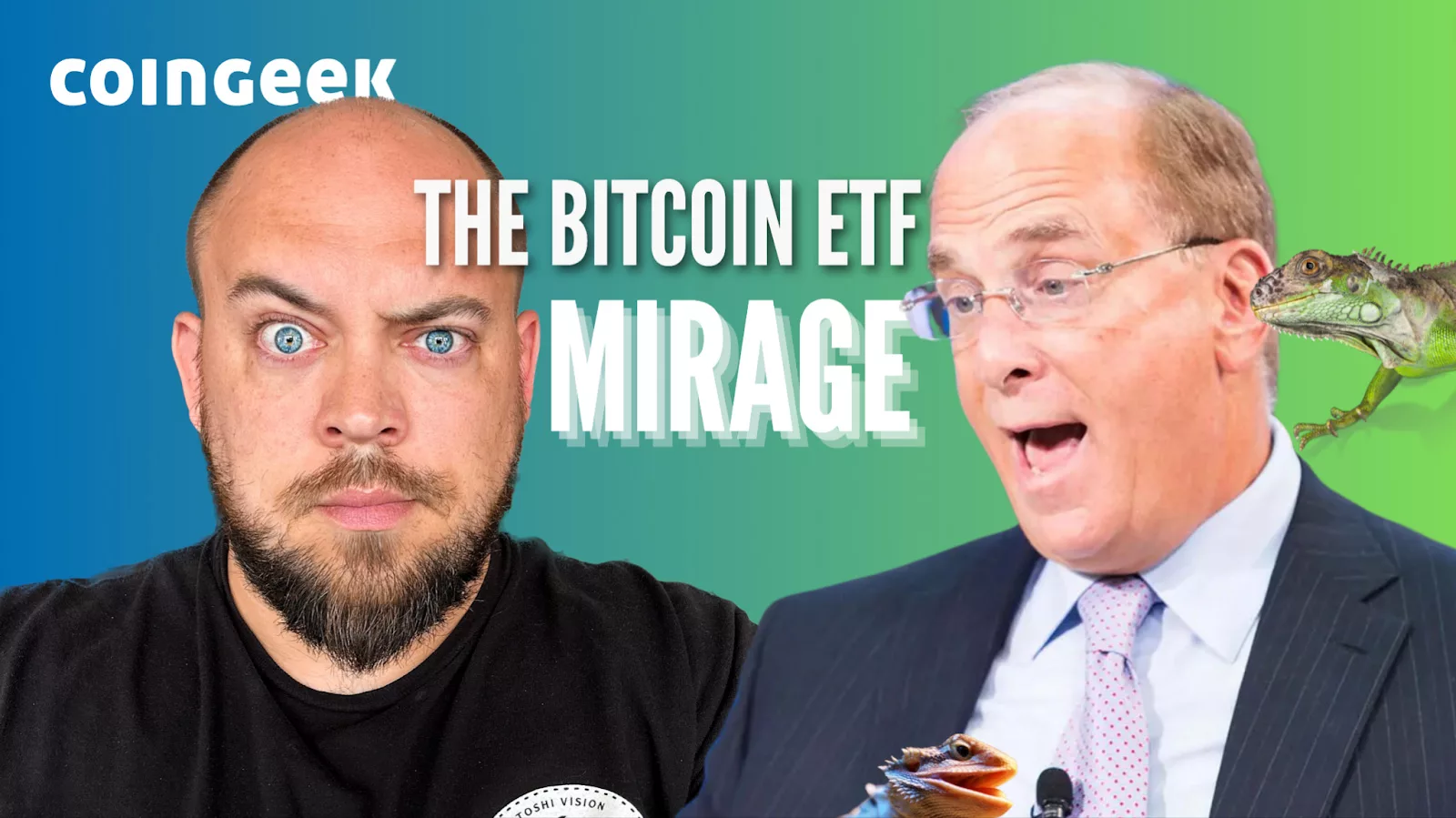|
Getting your Trinity Audio player ready...
|
2023 started out with a bang for Bitcoin. A little colored coin token project called “Ordinals” that was proposed by Casey Rodarmor in late 2022 came out with a reference implementation in January of 2023. Looking back on the year, it’s hard to point to anything in Bitcoin that doesn’t lean on Ordinals in some way.
This innovative protocol introduced a new way to create and manage digital assets, specifically non-fungible tokens (NFTs), on the BTC blockchain—something many people thought impossible. The Ordinals protocol allows for the inscription of various types of digital information, such as text, images, DNS records, audio, or whatever else, directly onto individual satoshis. This technology marked a significant development as it enabled BTC to store and transfer digital items like NFTs on other blockchains like Ethereum. It also validated the work and the (for lack of a better term) preaching that big blockers have been doing in regard to the largely ignored powers of Bitcoin for many, many years.
The release of the Bitcoin Ordinals protocol in January 2023 led to a significant increase in the number of inscriptions on the BTC network. This surge in activity also resulted in a noticeable increase in transaction fees, tons of in-fighting among small blockers, and billions of inscriptions across the blockchain landscape.
Spill-over benefits
On top of vindicating the big blockers for advocating for novel uses of Bitcoin to rake in transaction fees, Ordinals on BTC also spawned many other beneficial things. From inscriptions on other chains like Doge, Litecoin, and ultimately the 1Sat Ordinals protocol on the BSV blockchain, it also spawned the BRC-20 fungible token standard, tokenized metaverse land called “Bitmaps” and lots of other novel uses of inscribed data on sats. It also got lots of BTC devs looking at the BSV blockchain and lots of BSV blockchain entrepreneurs creating opportunities in the cross-pollination economy. I wrote about the “Ordinals Nomads” phenomenon in July of this year.

In the BSV blockchain, the adoption of Ordinals came at just the right time as both Sensible and Run tokens were quietly sunset in 2022, and other token standards have struggled to gain wide adoption across the ecosystem. With the adoption of a broader standard like Ordinals, the 1Sat Ordinals protocol united the clans with support from WhatsOnChain, HandCash, sCrypt, Haste Arcade, TakeIt, GorillaPool, AlphaDapp, SHUA wallet, RelayX, and led to the emergence of HODLocker.com, Panda Wallet and the FireSats marketplace. This is in addition to support from lots of apps, games, artists, and the official 1SatOrdinals.com wallet and marketplace—showing that the ecosystem was very hungry for a sat-based, low-level token protocol, and it has paid incredible dividends with over a billion 1Sat Ordinal inscriptions occurring in just the first year!
The OrdiPort December 17th, 2023
Bitcoin Ordinals ReportOrdinals Count:
Bitcoin SV – 1,200,000,000
Bitcoin Core – 50,000,000 pic.twitter.com/e8Wz1KQsFC— Zack Wins (@DevelopingZack) December 18, 2023
BlackRock Bitcoin ETF
The BlackRock Bitcoin ETF application was another interesting highlight of the year. With an over 99% success rate at getting ETFs approved, small blockers were chomping at the bit until reading that Black may choose forks other than BTC and decide to call them “bitcoin.” Interestingly, the long and thorough document also only mentioned three people as having a significant impact on market forces: Steven Mnuchin, Janet Yellen, and Craig Wright—adding to the chagrin of the small blockers.
The introduction of a Bitcoin ETF by BlackRock is significant for several reasons, but mostly, a Bitcoin ETF offers increased accessibility to digital asset investments, enabling investors to gain exposure to Bitcoin (perhaps more than one version) through a regulated, familiar investment vehicle, and those regulatory implications are also notable because they suggest a maturing market that’s gaining regulatory acceptance—kind of… Also, doing a ton of due diligence would lead any institutional firm to have to pay attention to what is happening with Craig Wright and the BSV blockchain economy as it relates to Bitcoin as a whole.
This move by BlackRock could lead to wider adoption and diversification in investment portfolios, as it signals confidence in the long-term viability of digital assets, but not without many compromises, which I have covered in previous articles this year.

More takedowns
And speaking of regulatory clarity, the big fish finally got reeled in this year as Changpeng “CZ” Zhao from Binance was forced to step down from his role as CEO.
As this has been widely covered, here are the bullet points:
- Guilty Plea and Settlement: He pleaded guilty to charges related to violations of U.S. anti-money laundering laws. This plea is part of a broader settlement with U.S. authorities.
- Financial Penalties: The settlement included substantial financial repercussions. Binance agreed to pay a fine of $4.3 billion, while CZ personally was subjected to a $50 million fine. These amounts reflect the gravity of the offenses and the scale of Binance’s operations.
- Allegations and Charges: The charges against CZ and Binance centered on violating the Bank Secrecy Act. This U.S. law requires financial institutions to assist government agencies in detecting and preventing money laundering. He pled guilty to specific charges of violations that included knowingly doing business with ISIS, Al Qaeda, and other terrorist groups.
BSV blockchain already won—again?
BSV also set a whole bunch of high water marks with various stress tests, organic trading and an incredible amount of hard work and flexibility from all the teams working on the tech side of BSV.
In August, the BSV blockchain set a new 24-hour transaction record at a bit over 128 million transactions in a single day—more transactions than any other blockchain EVER!
However, critics argue that this celebration is unwarranted, as this transaction speed is far from groundbreaking.
For instance, the #BSV blockchain processed over 128 million transactions in a single day, highlighting its superior processing capability compared to Base. pic.twitter.com/aCsJ6JYE0D
— CoinGeek (@RealCoinGeek) August 30, 2023
After a major reorganization at nChain in October and November, the BSV fiat price started to climb rapidly, setting off something of a bull run. Infrastructure provider Bitails conducted a few stress tests alongside Taal. The first was designed around pushing transactions per second to its limit with Arc, and the second was pushing complex outputs to rapidly grow the UTXO set—a computationally difficult thing to do. Both were deemed successful, and it’s a good thing, too because the lessons learned in November were crucial to deal with in December.
The stress test conducted by Bitails revealed a number of BSV transactions with remarkably big UTXO sets. The largest transaction, weighing in at 6.21 MB, had 180K UTXOs and only cost US$0.0062.https://t.co/9lrtiWlOS9
— charlotte grace (@charlotteg24431) December 9, 2023
Remember the BRC-20 standard on BTC? Well, in BSV, we call it BSV-20 (we are also winning a creativity and sarcasm award), and the FireSats team opened up a marketplace for fair launch fungible inscriptions. A new challenge was discovered: very cheap outputs and algorithmic minting. In mere days, the UTXO set of the BSV blockchain was growing exponentially, and thankfully, we had learned a bunch of lessons from the Bitails stress tests the month before to mitigate the volume problems that would have killed any other blockchain. In good news on that front, despite the fact that a billion new ordinal outputs were created and required indexing, JungleBus and other infrastructure focused on the new token economy held up famously!
A BSV20 is currently minting that would require 210,000,000,000 *INSCRIPTIONS* to mint out.
I actually find this fascinating. https://t.co/uUu57u9VwR
— JumpMan (@jumptradez) December 14, 2023
All this Ordinals stuff also begat the HODLocker tribe: a subset of the ordinals nomads who have decided that the only messages that matter are those with sats locked up as they are posted. Many BSV-ers have taken to the concept, and there’s a growing community of lockers who think that all the world’s problems are solved with locked coins—and maybe they’re right!
— hodlocker (@hodlocker) December 12, 2023
Gaming
I would be remiss if I didn’t mention the overhaul HandCash made to their website to treat it first as a gaming portal and the hit game “Champions TCG.” Champions launched their cards on BTC using OrdinalsWallet, on BSV blockchain using HandCash, and even have cards on Doge using Ordinal inscriptions, but using BSV blockchain for all of the turn-based game logic and management. They get a shout-out for a few reasons:
1: They built a game that is simply fun to play!
2: They took my advice to get out and find real customers in the real world, and they have done a hell of a job at it.
3: They continue to iterate into the real world by supporting multiple chains and looking for customers wherever they might have money, which depoliticizes the blockchains!
🚨 24 hours left to buy Gen 1 cards on DOGE!
Only 325 of 1000 packs left. Get one before they are gone!
Only on @verydogelabs👇https://t.co/XaCCw5kAQu #DogeGaming #ChampionsTCG pic.twitter.com/5d8UqYuzny
— Champions of Otherworldly Magic 🔮 (@ChampionsTCG_) December 18, 2023
Alongside all of that, AssetLayer also retooled their systems to focus on gaming—specifically—instead of just being a token platform, Haste Arcade made a bunch of new releases, and gaming was one of the major players in the BSV economy in 2023.
As we sit back and reflect on 2023, I am excited to see how the groundwork we laid in the Bitcoin economy this year will bring dividends in 2024. In many ways, this is the calm before the storm. The market seems like it’s heating up for a 2024 bull market, the next Bitcoin halving, and the COPA v Wright trial will kick the year off early.
Then, we will see what becomes of things after the dust settles. Until then, take a little break, enjoy the holidays, and be good to each other!
Watch: Here’s how Bitcoin works as the base layer for other blockchains

 12-24-2025
12-24-2025 




